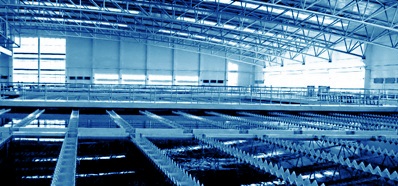Frequency Converters
Purpose and Application of Frequency Converters
Frequency converters, also known as variable frequency drives (VFDs), are electronic devices designed to control the rotation frequency of alternating current (AC) electric motors. They play a crucial role in various sectors such as industry, energy, transportation, and others, providing efficient control of electric drives and thereby optimizing energy consumption and production processes.
Purposes of Using Frequency Converters
Frequency converters perform the following tasks:
- Rotation frequency control: The primary function of a frequency converter is to regulate the frequency of AC supplied to the electric motor, ensuring precise control of the motor’s rotation speed based on process requirements;
- Energy savings: VFDs enable the efficient use of energy by adjusting the operating speed of electric motors according to the current load. This reduces electricity consumption and contributes to resource conservation;
- Soft start and braking: Frequency converters ensure a smooth start and braking of electric motors, reducing mechanical stress and extending the equipment’s lifespan;
- Improved control accuracy: The ability to precisely adjust the frequency and, consequently, the rotation speed provides high control accuracy in various manufacturing processes.
Application Areas of Frequency Converters
Variable frequency drives for AC motors have found widespread application in the following areas:
- Industry: Widely used to control drives for fans, pumps, conveyors, compressors, and other equipment, optimizing production processes and reducing energy costs;
- Energy sector: In the energy industry, frequency converters are employed to control generators and pumps in hydroelectric power stations, as well as to regulate fans and pumps in thermal power plants;
- Transportation: In the transportation sector, they are used to control electric drives for trains, trams, subways, and other vehicles;
- Household use: Frequency converters are also applied in household appliances such as air conditioning systems, refrigerators, and washing machines, providing efficient motor control.
Frequency converters play a key role in modern electrical engineering, ensuring efficient control of electric drives and enhancing energy efficiency across various industries. Their application contributes to improved production processes, reduced energy consumption, and increased equipment reliability.
The frequency converters supplied by our company represent a new generation of speed control systems characterized by optimized sensorless vector control and compatibility with Space Vector Pulse Width Modulation (SVPWM) mode. They stand out for their high-quality input power, high power factor, and superior signal parameters at the power output.
500VA SPh FC – 500 VA single-phase frequency converter
| Name or Title | Indicator | Note |
| 500VA SPh FC |
|
|

1kVA FC – 1 kVA Frequency Converter
| Name or Title | Indicator | Note |
| 1kVA FC |
|
|

50 kVA FC – 50 kVA Frequency Converter
| Наименование | Показатель | Примечание |
| 50 kVA FC |
|
|

7,5 kW V FC – Vector Control Frequency Converter 220V/380V
| Name or Title | Indicator | Note |
| 7,5 KW V FC |
|
|

0,75 KW V FC – Frequency Converter 220 V/380 V
| Name or Title | Indicator | Note |
| 0,75 KW V FC |
|
|

0,75 – 20 KW EE FC – Frequency Converter 220 V/380 V
| Name or Title | Indicator | Note |
| 0,75 – 20 KW EE FC |
|
|

10 – 200 KW EE FC – Frequency Converter 220 V/380 V
| Name or Title | Indicator | Note |
| 10 – 200 KW EE FC |
|
|

30 – 600 KW EE FC – Vector Frequency Converter 380 V
| Name or Title | Indicator | Note |
| 30 – 600 KW EE FC |
|
|

0,5 – 20 KW VV FC – Frequency Converter 220 V/380 V
| Name or Title | Indicator | Note |
| 0,5 – 20 KW VV FC |
|
|

Lift equip FC – Frequency Converter for Lifting Equipment
| Name or Title | Indicator | Note |
| Lift equip FC |
|
|

Auto el vehicl FC – Frequency Converter for Electric Vehicles
| Name or Title | Indicator | Note |
| Auto el vehicl FC |
|
|

Switch FC – Frequency Converter Control Device
| Name or Title | Indicator | Note |
| Switch FC |
|
|

Pump DC dviver FC – Solar Energy Conversion Control Device for Pump Power
| Name or Title | Indicator | Note |
| Pump DC dviver FC |
|
|

HV EE V FC – High-Voltage Vector Frequency Converter up to 10 kV
| Name or Title | Indicator | Note |
| HV EE V FC |
|
|

Advantages of Using Frequency Converters
The use of frequency converters brings several benefits:
- Energy savings: Frequency converters allow for reducing starting currents and regulating the energy consumption of equipment depending on the required load, leading to energy savings;
- Increased equipment lifespan: Smooth starts and the ability to adjust the rotational speed of motor shafts contribute to extending maintenance intervals and prolonging the service life;
- Wide power range: Converters can be utilized for both single-phase capacitor motors with power less than 1 kW and synchronous electric machines with power up to tens of MW;
- Protection against emergency operation modes: They provide protection against overloads, short circuits, phase loss, and also perform automatic restart when power supply is restored after disconnection.



